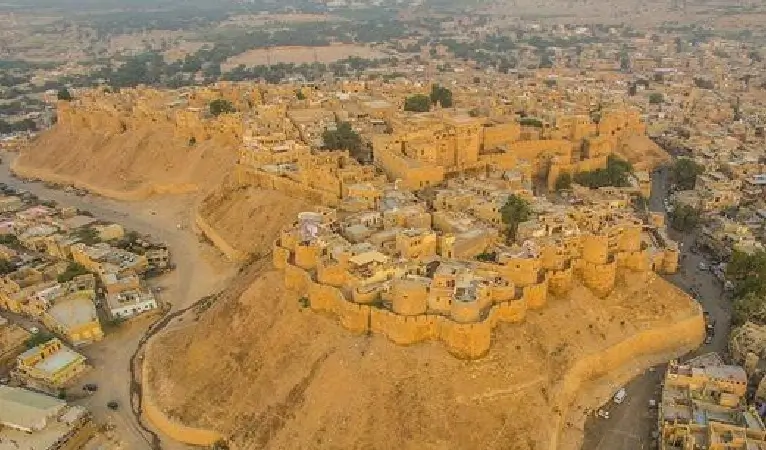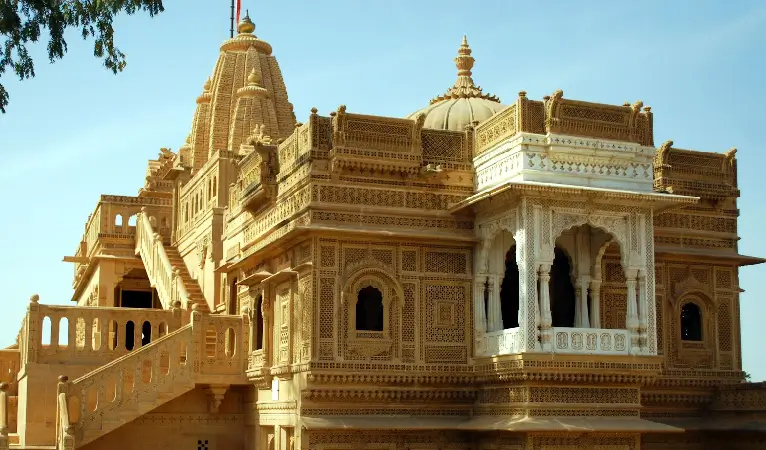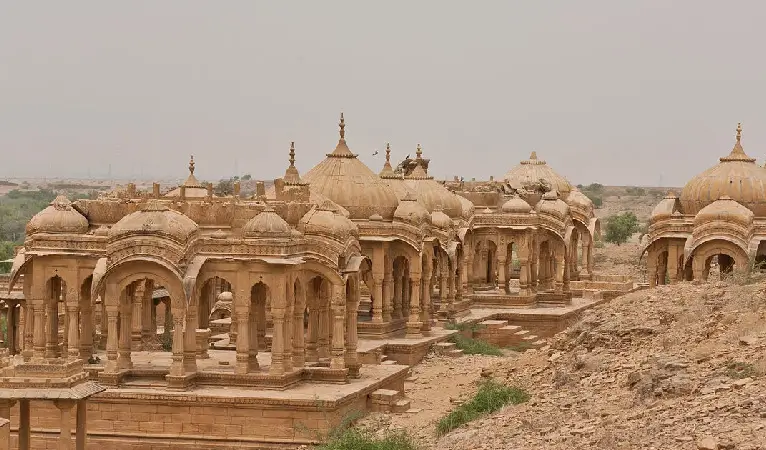
The actual meaning of Jaisalmer is "the Hill Fort of Jaisal." Because of the colour that comes from the yellow sandstone that was used to create the buildings, the desert city is also known as the Golden City. Situated in the centre of the Thar Desert, Jaisalmer is one of the last major cities in Rajasthan that is closest to the border between India and Pakistan. From its prominence as a major town on the historic camel-train route that traversed India and Central Asia, Jaisalmer has undergone significant development.
The geopolitics of the area and, of course, the development of additional trade routes have contributed to the rise and fall of Jaisalmer's fortunes over the ages. Jaisalmer suffered a fatal blow from the increase in maritime trade, particularly during the British Era. It appeared as though Jaisalmer would vanish from the face of the earth sooner rather than later due to its independence and the subsequent enmity with Pakistan. But Jaisalmer's fortunes turned around once more amid India's worst period. Jaisalmer's strategic location near the border became important to the Indian government during the wars that it fought with Pakistan in 1965 and 1971.
The community that had been all but forgotten was soon back on the map. The military stations that have sprung up over the years have fueled Jaisalmer's economy, which formerly depended on the old trading routes. The residents of Jaisalmer have benefited greatly from tourism in terms of their standard of living. Although getting to Jaisalmer requires a lengthy detour, the Border Roads Organisation (BRO)'s well-paved roads make the trip much easier than it would have been otherwise.
The Jaisalmer Tourism tour culminates at the magnificent Jaisalmer Fort, which was added to the UNESCO World Heritage List in 2013. The focal point of all tourist activities in Jaisalmer is this fort. However, Jaisalmer is much more than just the fort. There are the breathtaking havelis made of the same golden sandstone as the fort, the sand dunes that draw hundreds of visitors from all over the world, the legends of beautiful damsels and evil divans, and the tale of a village that was abandoned nearly instantaneously and is still abandoned hundreds of years later.
The sole living fort in Rajasthan is Jaisalmer Fort, one of the world's largest defenses. Jaisalmer Fort, which is home to over 3,000 people, is filled with homes, shops, cafes, homestays, and temples. The Jaisalmer Fort was inducted into the UNESCO World Heritage List in 2013. The fort is known as Sonar Quila, or Golden Fort, because of the golden colour of its sandstone walls. Jaisalmer is a unique place since it is a living fort, which makes it simple to understand what life was like within the fort hundreds of years ago.

Another draw of the city is the collection of finely carved temples housed inside Jaisalmer Fort's walls. Built between the twelfth and fifteenth centuries, these seven Jain temples are joined to one another by walkways and tunnels. Before entering the temple, you must remove your shoes and all of your leather items, such as wallets, handbags, and belts. Chandraprabhu, the eighth tirthankar, is the subject of the earliest temple in this cluster and conceivably the most well-known. This temple was built in 1509 and is open from 7 am to 1 pm.

About six kilometers from Jaisalmer lies the breathtaking cenotaph garden known as Bada Bagh. The numerous chattris, or cenotaphs, honor the late Jaisalmer monarchs and are situated in the garden at the base of a hill. Take note that the graves are empty and there are no bodies present. Although Bada Bagh isn't usually included in most itineraries, you can expect a great lot of solitude and quiet despite the fact that it's not a well-maintained garden.

Dussehra Chowk, the fort's central plaza, is dominated by the 11-story palace that was the king's personal abode. Overlooking Hawa Pol (Gate of Winds), a section of the palace provides views of the area that served as the hub of most of the fort's activity both before and now. The windows of the zenana, or women's rooms, are made to provide the person inside with unhindered views of the activities below without being noticed in return, much like the architecture of the era in Rajasthan. The entryways of almost every room are somewhat narrow, designed specifically to make the visitor bend and stoop when entering.
Sam's (pronounced "Some") house is situated on the border of Jaisalmer's Desert National Park. Situated somewhat more than 40 miles to the west of Jaisalmer, the Border Road Organization's well-constructed highways make it simple to reach the sand dunes of Sam. Sam's popularity has increased over time, surpassing all previous levels. Therefore, Sam's setting during the busiest travel season is reminiscent of a busy fair. Sam no longer offers the allure and romanticism of peacefully seeing the sand dunes because you will undoubtedly be harassed by camel owners, local performers, beggars, and touts. Sam, however, provides a fantastic opportunity to view sand dunes up close, an opportunity that has escaped the majority of Us.